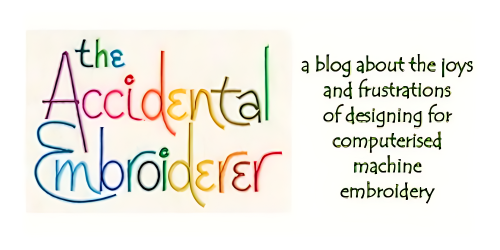Following on from the Optical Bird, I’ve drawn and digitised an Optical Goat. The basic principle is very simple. First there’s just a simple outline drawing of the goat, divided into equal squares (in this case, 10 cm x 10 cm)

The basic goat drawing overlaid with a grid of 10 cm squares
Then it’s just a matter of filling each square with a little design that is both complete in itself, and which contributes to the overall shape of the goat. In some ways this is a bit like doing zentangle drawings, and I’ve used some familiar zentangle motifs in some of the squares. But it’s different from zentangles because each square has to relate in some way to the adjoining ones – otherwise the shape of the goat won’t be clear

The goat with each square containing a different design
Over the past few days I’ve been stitching out the squares – there are 42 of them so it’s taking a while. It’s been very enjoyable, because choosing the right colours of fabrics and threads for the panel is always fun. Of course I don’t always get the colours right but if I make a mess of it, at least it’s easier to re-stitch a small square than it is to have to re-do an entire design
Rather than using “bought” quilting fabric, I’ve been using home-painted fabric for the work. Here are some examples of painted fabric that I used for the goat

Hand-painted fabric for the embroideries
and here are some of the squares embroidered on the painted fabric.

Squares embroidered on hand-painted fabric
To my eye, the uneven colours add a lot of interest to the embroidery. Made with ordinary fabric the squares would look flat and boring, but the irregularities of colour of the painted fabric should add to the complexity and appeal of the final work
The stitching-out of the squares is now mostly complete, and by next week the whole panel should be finished
